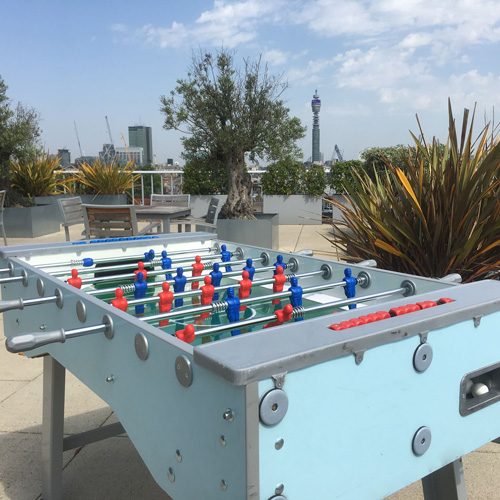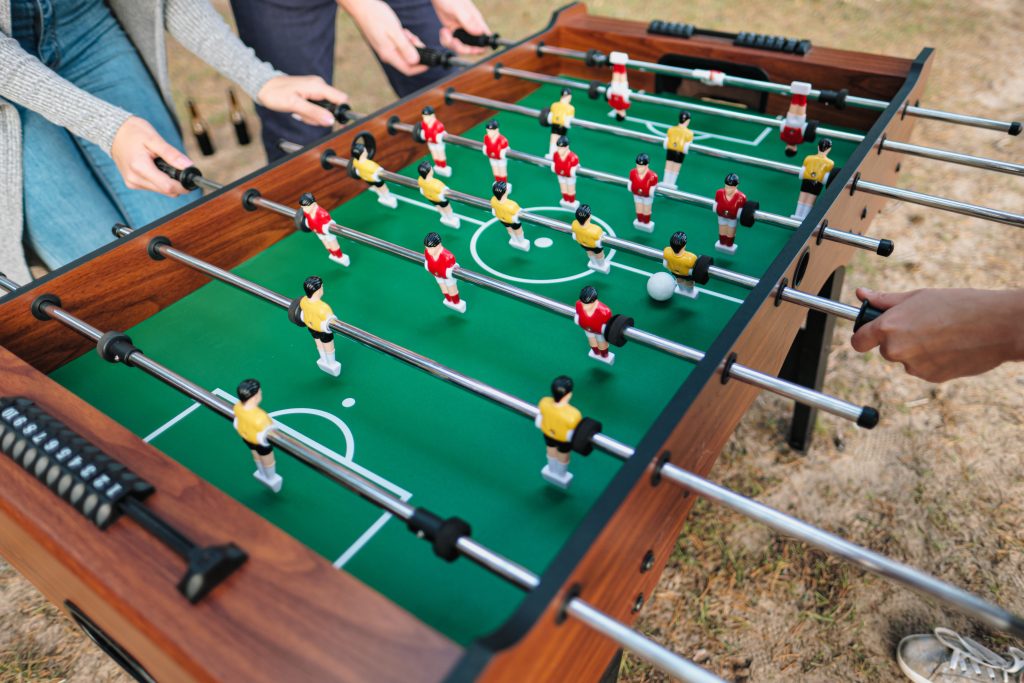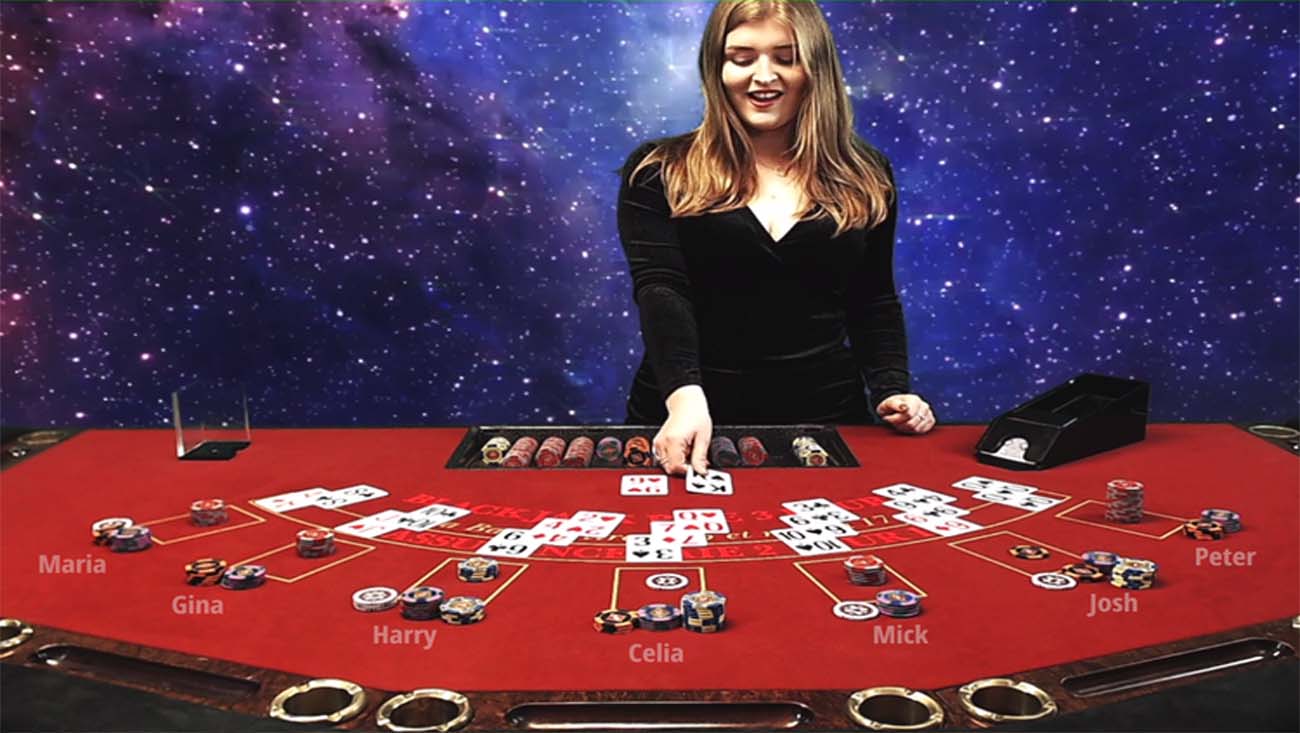
Table football, more commonly known in the UK as foosball, is more than just a casual pub pastime. It’s a fast-paced, engaging game that has become a fixture in game rooms, youth clubs, office break rooms, and event spaces alike. But for those who’ve never played, or have only ever given it a quick spin while waiting for their pint, the mechanics and subtle skills involved can be a bit of a mystery. In this guide, we’ll explore how table football works, from the basic setup and rules to the techniques that make it such an addictive and competitive game. Whether you’re a curious beginner or someone looking to brush up on the finer points of play, we’ll break down everything you need to know—no jargon-heavy explanations, no complicated instructions, just straightforward insight into one of the world’s favourite indoor sports.
The Origins of Table Football
Before diving into how it all works, it’s helpful to understand where the game comes from. Table football is thought to have originated in Europe, with various claims to its invention coming from Spain, Germany, and France. However, the modern version as we know it today is often attributed to Harold Searles Thornton of the UK, who patented the game in 1921. Thornton designed table football to mimic real football (or soccer, as it’s known across the pond), allowing players to enjoy a scaled-down version of the sport from the comfort of their living rooms. Over the decades, table football gained popularity throughout Europe and eventually made its way to the United States and beyond. Different countries developed their own styles of play and even unique table designs, resulting in a diverse and dynamic global foosball culture.


The Anatomy of a Table Football Setup
At first glance, a foosball table might look like a simple box with handles sticking out the sides and a few plastic men frozen in mid-kick. But the design is quite ingenious. A standard table football setup consists of a rectangular table with raised sides to keep the ball in play. There are eight rods that run through the width of the table—four for each team. These rods control rows of figures, usually made of plastic or metal, which are positioned to replicate actual football positions: goalkeepers, defenders, midfielders, and strikers. Each player uses the handles attached to their rods to rotate, slide, and position their footballers in an effort to kick the ball into the opposing team’s goal. The pitch is usually made of laminate or plastic and is slightly curved at the edges to prevent the ball from getting stuck. There are various sizes and quality levels of tables, ranging from basic, home-use versions to tournament-grade machines with counterbalanced players, textured playing surfaces, and robust construction. Professional tables are often regulation size and are designed to provide consistent ball control, precision, and durability.
Basic Gameplay Rules
Table football is typically played with either two or four players. In a singles game, one player controls all four rods on each side. In doubles, each team of two splits the responsibilities—one player manages the defence (goalkeeper and defenders), while the other takes charge of the midfield and strikers. The game starts with a coin toss to determine which side gets the first serve. The ball is then dropped into the centre of the pitch through a hole on the side of the table. From there, it’s a race to control, pass, and shoot the ball with skill and speed. The primary objective, of course, is to score goals. Most matches are played to a set number of goals—five, seven, or even ten depending on the setting—or within a time limit. The side with the most goals at the end wins the game. In official tournament settings, matches are often played in best-of-three or best-of-five formats, depending on the rules in place. One important rule that separates skilled play from chaotic spinning is the prohibition of “spinning.” This refers to turning the rods more than 360 degrees before or after striking the ball. Spinning is generally frowned upon and often outlawed in proper games because it removes control and diminishes the skill element.
Techniques and Strategies
While the game can be fun to pick up and play casually, mastering table football takes patience and practice. Like real football, strategy and skill separate the seasoned player from the beginner. A good player learns how to pass the ball effectively between rods. For example, they might trap the ball with a midfield player and then gently slide it to a striker. Shooting techniques vary from player to player. Some favour the classic “pull shot,” where the ball is dragged sideways before being launched at goal. Others might use a “snake shot,” which involves gripping the handle tightly and executing a quick wrist flick for power and precision. Defence is just as important as attack. Experienced defenders anticipate passes and block shots with clever rod positioning. Timing, awareness, and reflexes all come into play. One of the more advanced techniques is “zone defence,” where the defender doesn’t chase the ball around but instead holds players in key blocking positions to shut down shooting angles. Another underrated aspect of the game is ball control. Rather than simply whacking the ball whenever it comes near, better players learn how to trap it under a player’s feet, take a moment to analyse their options, and execute a thoughtful pass or shot. This calm and calculated style of play tends to outperform frantic, reactive movement every time.
Types of Foosball Tables
As mentioned earlier, table football tables differ in design and build, often depending on where they’re made. European tables like the French Bonzini or the German Leonhart tend to have distinct playing characteristics. Bonzini tables, for instance, use wooden players and a cork ball, allowing for more finesse and control. Leonhart tables, on the other hand, favour a faster game with a plastic ball and rubberised surfaces. American tables like Tornado are known for their solid, powerful build and a heavier style of play. The players on Tornado tables are usually counterbalanced, meaning they stay in place when left in a certain position—ideal for setting up precise shots. Choosing the right table depends on the style of game you enjoy. Some people love the fast-paced chaos of lighter tables, while others appreciate the deliberate strategy allowed by heavier, professional-grade equipment.


Social and Competitive Appeal
What makes table football so popular isn’t just the game itself, but the culture around it. It’s a social activity that draws people in, regardless of age or experience. A table in a bar or event space quickly becomes a hub of laughter, friendly competition, and team spirit. At the same time, foosball also appeals to highly competitive players who enter regional and international tournaments with serious ambition. The World Table Soccer Federation (ITSF) governs professional table football and organises global events, with players competing for titles and rankings. In the UK, there’s a growing network of leagues and competitions that bring together enthusiasts from all walks of life. Whether you’re in it for the love of the game or the thrill of competition, table football has something for everyone.
Table Football Etiquette
As with any sport, there are unspoken rules and etiquette that players are expected to follow. First and foremost is respect for your opponent. Even in casual games, good sportsmanship adds to the fun. Avoid slamming the rods or table, as it can damage the equipment and make the game unpleasant for others. Waiting your turn patiently and not distracting players mid-game is also part of proper etiquette. And of course, adhering to the no-spinning rule shows you’re playing with skill and integrity. In tournaments or more serious matches, players typically shake hands before and after the game, and disputes are settled by a referee or official scorekeeper if necessary.
Table Football for Events and Parties
The versatility of table football makes it a brilliant addition to parties, corporate events, weddings, and exhibitions. It’s a game that encourages interaction, laughter, and even a bit of healthy competition. Hiring a table for your event can transform the atmosphere, giving guests something unique and engaging to enjoy. Many companies now offer table football hire services, allowing you to rent professional-grade tables for short-term use. These tables are often delivered, set up, and collected afterwards, making the process effortless for organisers. Hiring is especially popular for team-building activities, where the game encourages communication and collaboration among colleagues. It’s also great at trade shows, where a foosball table can attract attention and footfall to your stand.
Why Table Football Remains Timeless
In an age where digital games dominate the entertainment space, table football’s appeal remains refreshingly tactile. There’s something immensely satisfying about gripping the handles, strategising with a teammate, and physically spinning your way to victory. Unlike many electronic games, foosball brings people face-to-face, building connections in real time. It also offers a level playing field. You don’t need to be a fitness buff or have years of training to play. All you need is a bit of hand-eye coordination, some enthusiasm, and a willingness to learn.
Viva Vegas: London’s Premier Table Football Hire Experts
If you’re planning an event in the capital and want to bring some lively, interactive entertainment to the mix, look no further than Viva Vegas. As the leading table football hire company in London, Viva Vegas provides high-quality, tournament-grade tables for all kinds of events. Their professional service ensures your table arrives on time, is set up properly, and adds a unique flair to your celebration or corporate gathering. Whether you’re hosting a wedding, office party, or brand activation, Viva Vegas brings the game—and the fun—right to your doorstep. Contact us today!!




